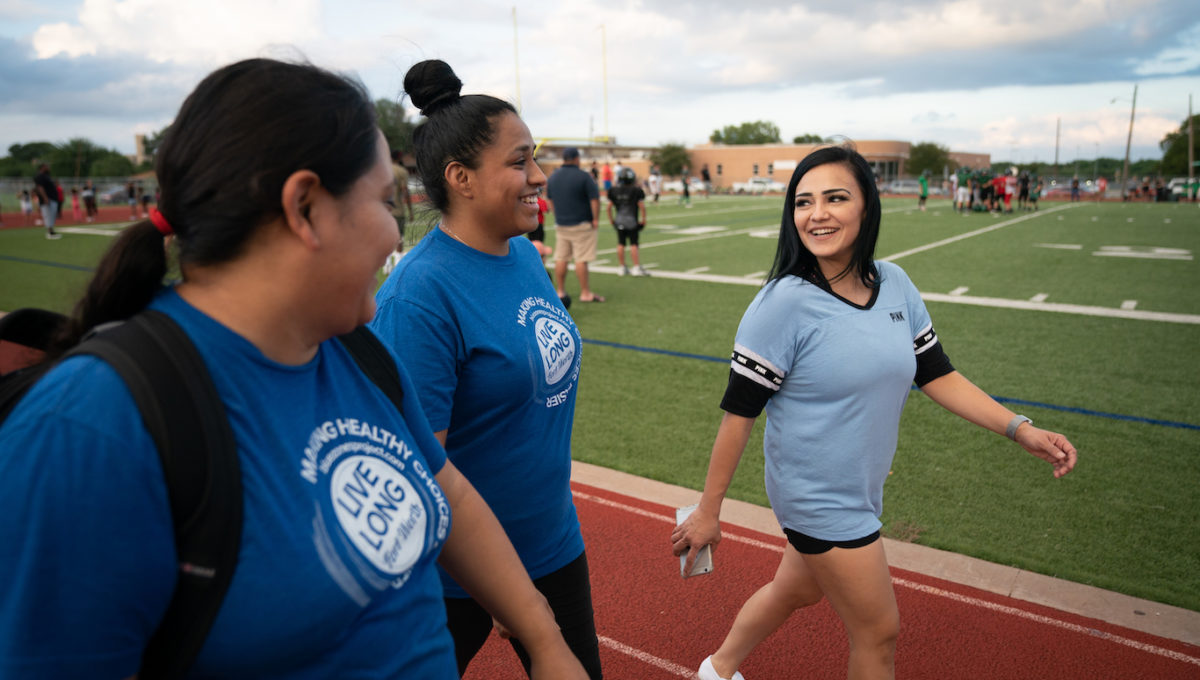Engaging diverse communities in population health initiatives

When Blue Zones Project by Sharecare launched in Fort Worth, Texas, in 2014, we had our work cut out for us. Research at the time ranked the city 185th out of 190 U.S. metro areas for individual well-being, with factors negatively impacting not just residents’ health but also economic productivity, healthcare costs, and Fort Worth’s attractiveness as a place to live and do business. To change the community’s health outcomes, then-Mayor Betsy Price and leaders at Texas Health Resources, the primary local sponsor of the Project, knew they would have to embark on an ambitious effort to lift the tide of a diverse, fast-growing city.
By combining city-wide goals with a neighborhood-by-neighborhood approach that accounted for the unique circumstances and demographics of each ZIP code, the local team was able to transform Fort Worth into one of the country’s healthiest cities. This achievement was marked by a smoking rate decrease of more than 30%, a 17% increase in the exercise rate, a 14% increase in the share of residents rating themselves as “thriving,” and a rise in civic pride of nearly 9%. These gains helped boost productivity and well-being not just at the overall city level, but also across the city’s six major geographical areas.
To effect these changes within just four years, the Project team’s approach contained key pillars that can guide other population health initiatives. While the goals of the Fort Worth project were unique to the community, the types of changes achieved are essential to building resilience that can improve communities’ abilities to withstand population-wide health issues and events such as COVID-19 and make them more attractive places to live for all.
Ask who is not represented. Early on, the Project team took stock and identified gaps in our own staffing and community engagement models so we could ensure that the people leading our efforts were as diverse as the communities they represented. Additionally, we hired members of the community to create and monitor neighborhood launch events. This sort of self-reflection continues to influence how Sharecare staffs local Blue Zones Project initiatives.
Build neighborhood “think tanks.” The Project team welcomed and actively sought the participation of community leaders and influencers in each of the city’s neighborhoods. Building “neighborhood think tanks” – councils that bridge the gap between knowledge and action – allowed individuals to feel agency over the positive changes we were trying to effect and gave them the opportunity to identify ways in which we might adjust our messaging or approach to garner better responses. These groups were key to the successful implementation of some of our tentpole initiatives; as examples, they helped ensure the purpose of a tobacco policy initiative was communicated in the right ways through the right mediums, and they collated important feedback that shaped policy changes around food access. Many of the people engaged had never been included in a community engagement process or asked what changes they’d like to see in their own neighborhoods.
Assess, plan, act. Then evaluate and sustain. When we entered communities around Fort Worth, we:
- conducted an assessment that consisted of driving and walking around the area, mapping assets, and identifying “gatekeepers” – influential members or leaders of social groups, religious institutions, or other prominent bodies;
- made a plan, creating a roadmap that outlined the current state of community health and where we hoped to be;
- took action, in partnership with familiar members of the community who could serve as ambassadors;
- evaluated the impact of our efforts;
- and sustained progress by training members of the community to keep positive changes going.
Throughout our time in Fort Worth, regardless of the neighborhood we visited, we witnessed the extent to which trust is slowly earned. As ambitious as our goals were, we learned we needed to take the time to nurture relationships through regular touchpoints to prove to community members that our goals were aligned with theirs.
By marrying an approach of “macro” goals, “micro” tactics, and cross-sector collaboration, communities can mature their population health efforts initiatives beyond one-off efforts and embrace an urban services model that enables physical, mental, and fiscal resilience in the cities of today and tomorrow.
To learn more about engaging diverse communities in a population health initiative, tune in to this on-demand webinar featuring leaders from the Blue Zones Project-Fort Worth team. If you would like to learn more about Sharecare’s approach to diversity, equity, and inclusion, visit our health equity hub.